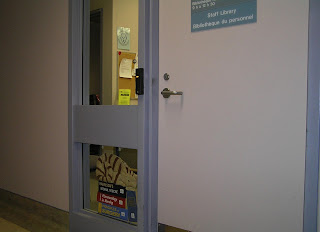Quilt No. 76
August 2011
I arrived at work one morning last winter to find a manila envelope had been stuffed under my door. I instantly knew that my friend Lily was the source. I am often the beneficiary of beautiful poems or scenes or other items that she is kind enough to share with me. Each time I am amazed that she would take time out of her life to share these treasures. On that particular day it was a packet of some of her favourite Christmas cards that she and her husband had received this year. The night scene with the reverential animals immediately captured me. “ Why not?” I thought. I would take a break from torturing my way through my own quilt designs and do one based on this card. The original art work of Eva Melhuish certainly needed no improvements from me! I just hope that when Ms. Melhuish created this scene, it went a lot more straight forwardly for her than it did for me.
At first, things went along smoothly. Scaling up the card into a pattern was a breeze. I just happened to have a background that I’d painted ages ago lying around that worked perfectly. I had used my usual Setacolor paints and achieved nice snowflake shapes by scattering oatmeal flakes over the wet surface of the fabric. Animal-like fabrics were also surprisingly easy to find at Fabricland. I even found a furry piece that did a pretty good mock up for the tabby cat. What could possibly go wrong?
Then I came to the trees. Recreating them seemed beyond my grasp. I tried drawing them, finding usable pictures of them, and taking actual photos of trees. Nope. I tried going abstract and I dyed fabric for them at least threes times, cutting them out in tree shapes, blobby snow shapes, anything that vaguely might be construed as being tree-like. Nope. I looked at pictures of snowy trees and branches on Google until my eyes grew twigs. Nada.
When I encounter this type of impasse I invariably use the same helpful strategy. I quit. Quitting can be good. Quitting can be merciful. I set the project aside where I can't even look at it. This was pretty distressing because the “set aside” projects were starting to take up a lot of space. They were blooming like weeds on ripe manure.
After a few months I looked for tree pictures - again. I finally found one tree that would work, so I scaled it up and altered it to yield four trees. These I printed out on cotton, using the ink jet printer. I know, you think it can’t be done, but the printer doesn’t care one bit as long as you have the cotton attached to some sort of stabilizing paper. Oh yes, and ink jet ink is not waterproof so you want that cotton to be commercially prepped for printing. If you’re an annoying a do-it-yourselfer like me you can do the fabric prep with Raycafix or Bubblejet Set, all very tedious, but tedious is what quilters live for. The printed trees were too pale, so I re-painted them with Lumiere paints.
The other big stumbling block was the squirrel’s tail. I had been thinking about how I would do the tail for months. It would be so much fun! It turned out the materials I had set aside for tail try-outs were all useless, totally useless. I had three kinds of fake fur, two kinds of real fur, three kinds of fuzzy fabric, and a package of strips that could be made into chenille. None of the fur or fabric worked out for reasons too boring and distressing to describe. I was not worried, since I really wanted to use the chenille anyway. In the original artwork, the squirrel’s tail curls around in the most fetching way. I would make the chenille do the same thing! But the strip of “chenille” I had was just a piece of flat fabric. It requires some kind of special brush to turn it into actual chenille. Chenille is not an exotic entity, it’s merely some kind of psychotically frayed fabric. This I never even imagined all those years I lay under my super-special chenille bedspread when I was a kid. I thought it was some kind of wonder fabric that probably came from a secret, carefully guarded factory in the faraway Orient. Not China, or Japan, or Taiwan - a much more mystical and exotic Orient. But no, you just get some loosely woven chunk and fray the hell out of it. What a dream buster that is. And to further destroy my fantasy, it does not make the excellent squirrel tail I had dreamed of.
I made another trip to Fabricland and found just the right colour of fake fur, with just the right length of pile. Lucky me – I only had to buy a strip 60 inches wide and 4 inches long to make a three quarter inch tail. But it worked, even though it didn’t curl in a fetching way. This I was willing to overlook. What I could not overlook was that cut wisps of fake fur drifted all over the house, gracing rugs, tables, black pants, computer screens, the even the toilet seat. Who knew fake fur could be so ubiquitous?











